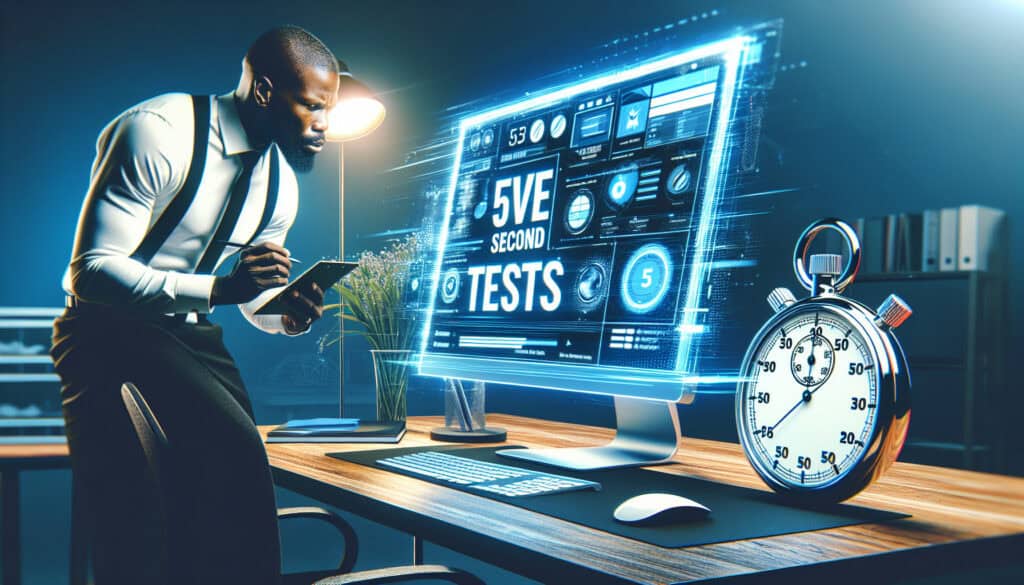To measure a user’s first impression of a design.
- 方法: 客户与营销, 经济学, 精益西格玛, 制造业, 项目管理, 质量
五秒测试

五秒测试
- 设计评估, 设计思维, Human-Centered Design, 交互设计, 可用性, 可用性测试, 用户体验(UX), 用户界面(UI), 用户测试
目标
如何使用
- A usability testing technique where a user is shown a design for five seconds and then asked questions about what they remember. It is used to evaluate the clarity of a design and whether it effectively communicates its intended message.
优点
- Quick and easy to conduct; Provides valuable feedback on first impressions.
缺点
- Only measures initial impressions and not the overall user experience; Can be influenced by the questions asked.
类别
- 客户与营销, 产品设计
最适合:
- Evaluating the clarity and effectiveness of a website's homepage or a new 标识.
Five Second Tests can be effectively implemented in various stages of product development, particularly during the early phases of design when teams are iterating on visual elements such as logos, landing pages, or app interfaces. This rapid testing method is valuable in fields like web design, advertising, and mobile application development, where user engagement is directly tied to visual clarity and messaging effectiveness. Organizations often run these tests with a small group of target users, typically through a simple setup involving digital tools that allow for quick display and feedback collection. For instance, a tech startup may present a prototype of their app’s onboarding screen, allowing users to comment on what stands out most after seeing it for just five seconds; their feedback can guide further iterations before full usability testing is conducted. The methodology prioritizes user impressions, making it particularly useful in design sprints or agile workflows, where time is of the essence and decisions must be made rapidly based on user-centric data. This testing can be facilitated by designers, product managers, or any team member familiar with the goals of the design, reinforcing a collaborative approach to understanding user perception. The simplicity and speed of this technique enable teams to gauge effectiveness quickly, reduce the likelihood of miscommunication, and align design objectives with user expectations, ultimately leading to a more intuitive final product.
该方法的关键步骤
- Show the design for five seconds.
- Ask the user what they remember after viewing the design.
- Inquire about specific elements and their purpose.
- Request feedback on the overall impression and clarity.
- Document user responses for analysis.
专业提示
- Incorporate a mix of target demographics to gather diverse reactions, ensuring broad applicability of results.
- Design specific follow-up questions that assess memory recall regarding visual elements, user expectations, and emotional impact.
- Record sessions for qualitative analysis, which allows for a deeper understanding of user thought processes and potential misconceptions.
历史背景
1986
(如果日期不详或不相关,例如 "流体力学",则对其显著出现的时间作了四舍五入的估计)。

相关文章
肌肉骨骼不适调查表
多变量测试(MVT)
多元回归分析
动作捕捉系统
MoSCoW 方法
情绪中值测试